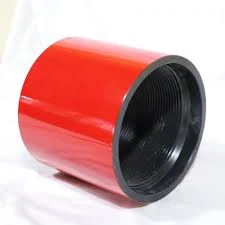- Afrikaans
- Albanian
- Amharic
- Arabic
- Armenian
- Azerbaijani
- Basque
- Belarusian
- Bengali
- Bosnian
- Bulgarian
- Catalan
- Cebuano
- Corsican
- Croatian
- Czech
- Danish
- Dutch
- English
- Esperanto
- Estonian
- Finnish
- French
- Frisian
- Galician
- Georgian
- German
- Greek
- Gujarati
- Haitian Creole
- hausa
- hawaiian
- Hebrew
- Hindi
- Miao
- Hungarian
- Icelandic
- igbo
- Indonesian
- irish
- Italian
- Japanese
- Javanese
- Kannada
- kazakh
- Khmer
- Rwandese
- Korean
- Kurdish
- Kyrgyz
- Lao
- Latin
- Latvian
- Lithuanian
- Luxembourgish
- Macedonian
- Malgashi
- Malay
- Malayalam
- Maltese
- Maori
- Marathi
- Mongolian
- Myanmar
- Nepali
- Norwegian
- Norwegian
- Occitan
- Pashto
- Persian
- Polish
- Portuguese
- Punjabi
- Romanian
- Russian
- Samoan
- Scottish Gaelic
- Serbian
- Sesotho
- Shona
- Sindhi
- Sinhala
- Slovak
- Slovenian
- Somali
- Spanish
- Sundanese
- Swahili
- Swedish
- Tagalog
- Tajik
- Tamil
- Tatar
- Telugu
- Thai
- Turkish
- Turkmen
- Ukrainian
- Urdu
- Uighur
- Uzbek
- Vietnamese
- Welsh
- Bantu
- Yiddish
- Yoruba
- Zulu
what is a pup joint
A pup joint is a specific type of pipe fitting commonly used in the oil and gas industry, particularly in drilling operations. Essentially, it is a short piece of pipe that has threaded connections at both ends. Its unique design allows for flexibility and adjustments within the piping system, making it an essential component in various drilling applications.
.
Pup joints are made from different materials depending on the conditions they will face. The most common materials include carbon steel and alloy steel, as they provide the strength and durability required for harsh drilling environments. In some cases, stainless steel is also used, particularly in corrosive environments, due to its resistance to rust and overall longevity.
what is a pup joint

One of the primary functions of pup joints is to provide a way to adjust the height of the drill string. Since drilling operations occur at significant depths and under varying conditions, maintaining the correct angle and alignment of the drill bit is crucial for successful drilling. Pup joints help mitigate any potential misalignment, optimizing the drilling efficiency and reducing wear and tear on the equipment.
Additionally, pup joints play a crucial role during the completion phase of a well. Once drilling has reached the required depth, completing the well involves installing various components, including casing and tubing. Pup joints facilitate the precise connections between these elements, ensuring they are secure and capable of withstanding the pressures encountered at depth.
In summary, pup joints are integral components within drilling operations, providing flexibility and ensuring proper alignment in piping systems. Their short length and threaded connections make them invaluable for adjusting the pipe’s configuration, helping to optimize drilling processes and maintain equipment integrity during both drilling and completion phases. Understanding the importance of pup joints can contribute significantly to the efficiency and safety of oil and gas operations.
-
Tubing Pup Joints: Essential Components for Oil and Gas OperationsNewsJul.10,2025
-
Pup Joints: Essential Components for Reliable Drilling OperationsNewsJul.10,2025
-
Pipe Couplings: Connecting Your World EfficientlyNewsJul.10,2025
-
Mastering Oilfield Operations with Quality Tubing and CasingNewsJul.10,2025
-
High-Quality Casing Couplings for Every NeedNewsJul.10,2025
-
Boost Your Drilling Efficiency with Premium Crossover Tools & Seating NipplesNewsJul.10,2025







